All morning, I have been out in my garden, trying to whittle away some of my Morning Glory vines that have thwarted the growth of my Carolina Jessamine.
“Carolina jessamine (Gelsemium sempervirens) is one of the most beautiful vines of the South. It covers fences and trees in open woodlands and along roadsides throughout the Southeast with its slender vines and bright yellow flowers. It is the state flower of South Carolina…Sweetly scented, golden yellow flowers cover the cascading, fine textured foliage from February to April.” Clemson Coop
.
Carolina Jessamine (Gelsemium sempervirens)
Image Credit: Woodie’s Garden Good
About this time last year, I bought a beautiful Carolina Jessamine plant, and I nursed it inside through the winter. As soon as spring arrived. I planted the jessamine in my garden, but I was not a good caretaker. I allowed my morning glory vines to overtake my jessamine. Not surprisingly, my jessamine did not thrive.
But here’s the thing: Carolina Jessamine is an evergreen vine. It will bloom year after year, and morning glories only live and bloom one season. Granted, morning glory puts on a show for that one season, but a blooming jessamine has an intoxicating fragrance, A good gardener would have exercised more discrimination in sowing her morning glory seeds. A better garden would have allowed both vines to thrive–each in its own spot.
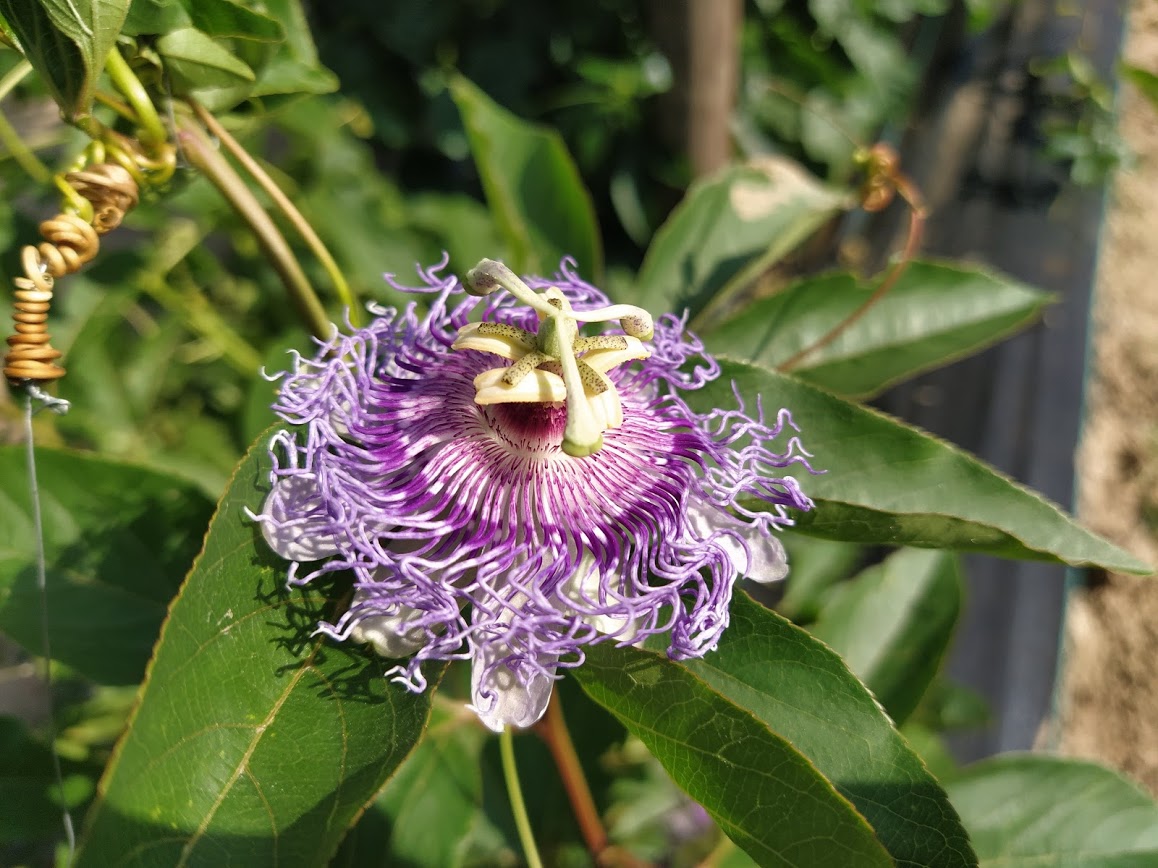
Passionflower Passiflora incarnata
Image Credit Wikipedia
While I was thinning the Morning Glory Vines, I also discovered a Passion Flower Vine I had planted during the early summer,
Richard Folkard talked about the passion flowers that are native to South America: It is believed that the Maypop Passion Flower that grows in the USA is a descendant of South America. When the outsiders first saw the South American passion flower, they felt that the plant was reminiscent of the passion of Jesus Christ. I am dismayed by some of those centuries-old observations of the plants, and I find some of their opinions a bit excessive. But I agree that the passion flower is an exotic and unique specimen.
PASSION-FLOWER.—
“The Passion-flower (Passiflora cœrulea) is a wildflower of the South American forests, and it is said that the Spaniards, when they first saw the lovely bloom of this plant, as it hung in rich festoons from the branches of the forest trees, regarded the magnificent blossom as a token that the Indians should be converted to Christianity, as they saw in its several parts the emblems of the Passion of our Lord.——
“In the year 1610, Jacomo Bosio, the author of an exhaustive treatise on the Cross of Calvary, was busily engaged on this work when there arrived in Rome an Augustinian friar, named Emmanuel de Villegas, a Mexican by birth. He brought with him, and showed to Bosio, the drawing of a flower so “stupendously marvellous,” that he hesitated making any mention of it in his book. However, some other drawings and descriptions were sent to him by inhabitants of New Spain, and certain Mexican Jesuits, sojourning at Rome, confirmed all the astonishing reports of this floral marvel; moreover, some Dominicans at Bologna engraved and published a drawing of it, accompanied by poems and descriptive essays. Bosio therefore conceived it to be his duty to present the Flos Passionis to the world as the most wondrous example of the Croce trionfante discovered in forest or field. The flower represents, he tells us, not so directly the Cross of our Lord, as the past mysteries of the Passion. It is a native of the Indies, of Peru, and of New Spain, where the Spaniards call it “the Flower of the Five Wounds,” and it had clearly been designed by the great Creator that it might, in due time, assist in the conversion of the heathen among whom it grows.

The Granadilla, or Passion Flower.
From Zahn’s ‘Speculæ Physico-Mathematico-Historicæ.’
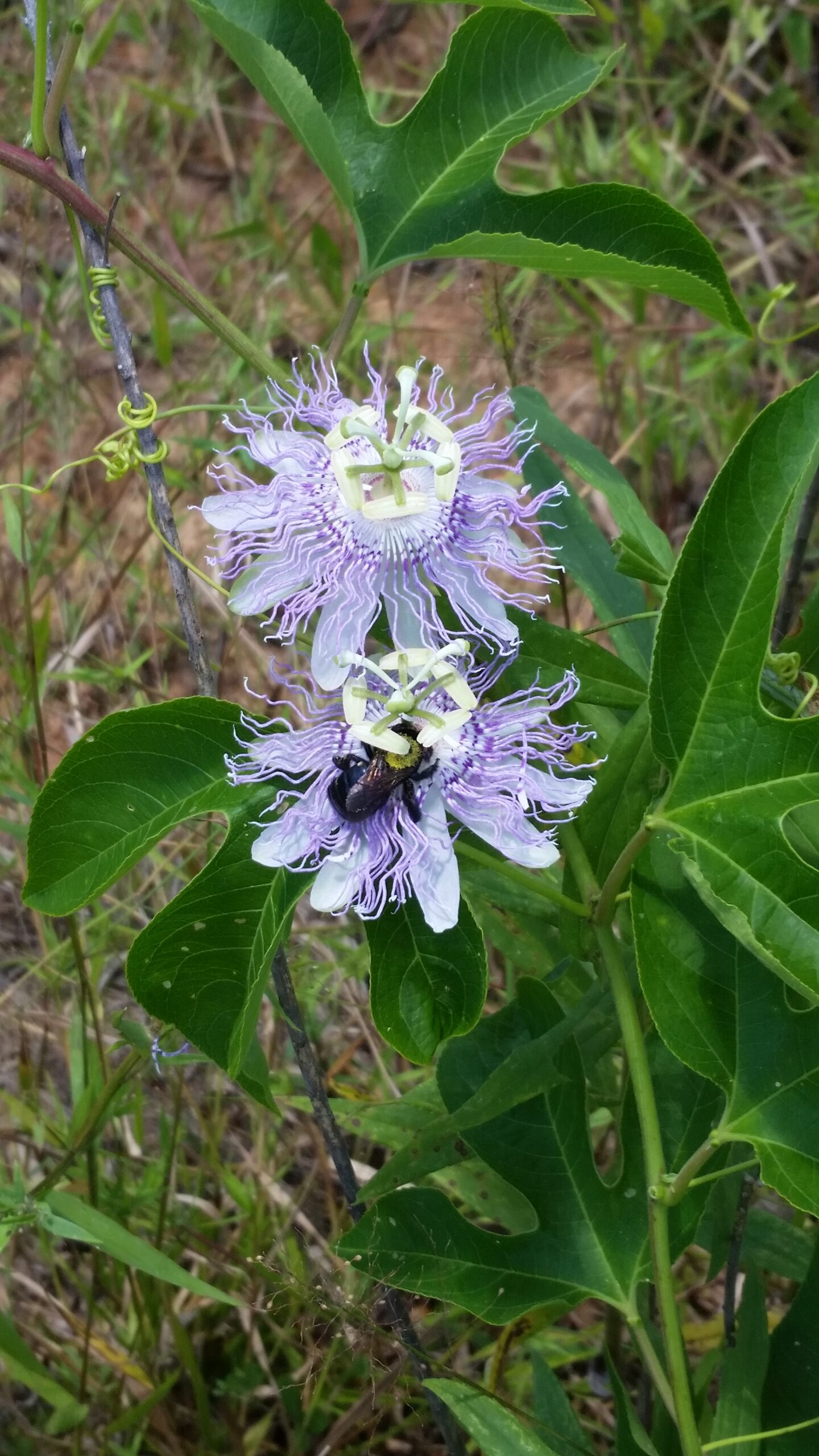
Image Credit: Wikipedia
“Alluding to the bell-like shape assumed by the flower during the greater part of its existence (i.e., whilst it is expanding and fading), Bosio remarks: “And it may well be that, in His infinite wisdom, it pleased him to create it thus shut up and protected, as though to indicate that the wonderful mysteries of the Cross and of his Passion were to remain hidden from the heathen people of those countries until the time preordained by His Highest Majesty.”——The figure given of the Passion-flower in Bosio’s work shows the crown of thorns twisted and plaited, the three nails, and the column of the flagellation just as they appear on ecclesiastical banners, &c. “The upper petals,” writes Bosio in his description, “are tawny in Peru, but in New Spain they are white, tinged with rose. The filaments above resemble a blood-coloured fringe, as though suggesting the scourge with which our blessed Lord was tormented. The column rises in the middle. The nails are above it; the crown of thorns encircles the column; and close in the centre of the flower from which the column rises is a portion of a yellow colour, about the size of a reale, in which are five spots or stains of the hue of blood, evidently setting forth the five wounds received by our Lord on the Cross.
“The colour of the column, the crown, and the nails is a clear green. The crown itself is surrounded by a kind of veil, or very fine hair, of a violet colour, the filaments of which number seventy-two, answering to the number of thorns with which, according to tradition, our Lord’s crown was set; and the leaves of the plant, abundant and beautiful, are shaped like the head of a lance or pike, referring, no doubt, to that which pierced the side of our Saviour, whilst they are marked beneath with round spots, signifying the thirty pieces of silver.”
“Such is Bosio’s description of what he designates the “stupendous flower,” and the stir which his writings caused among the botanists and theologians of Italy soon brought about the introduction of the plant itself, which, before the year 1625, had established itself and blossomed in the garden of Cardinal Odoardo Farnese, at Rome. Aldinus, who was both the Cardinal’s physician and the controller of his garden, has left his description of the Passion-flower, and says of it:—“This is the famous plant sung by poets and celebrated by orators, the plant reasoned about by philosophers with the utmost subtlety, praised by physicians for its marvellous virtues, sought for eagerly by the sick, wondered at by theologians, and venerated by all pious Christians.” In his description of the flower Aldinus sets forth “what theologians may really find in it.” He says: “The nails on the top are represented so exactly, that nothing more perfect can be imagined…. In the open flower they are twisted and marked with dark blood-like spots, as if they had been already removed from the Cross. The small undeveloped seed-vessels may be compared to the sponge full of vinegar offered to our Lord. The star-form of the half-opened flower may represent the star of the Wise Men; but the five petals, fully opened, the five wounds. The base of the ovary is the column of the flagellation. The filaments represent the scourges spotted with blood, and the purple circle on them is the crown of thorns, blood covered.
“The white petals symbolise the purity and brightness of Our Lord, and His white robe. The corniculata folia, the sub-petals, white inside and green without, figure hope and purity, and are sharply pointed, as if to indicate the ready eagerness with which each one of the faithful should embrace and consider the mysteries of the Passion.

Image Credit: Unruly Gardening
The Three-lobed Leaves of the Passion Flower Represent the Trinity
“The leaves of the whole plant are set on singly, for there is one God, but are triply divided, for there are Three Persons. The plant itself would climb toward heaven, but cannot do so without support. So the Christian, whose nature is to climb, demands constant assistance. Cut down, it readily springs up again; and whoever holds the mysteries of the Passion in his heart cannot be hurt by the evil world. Its fruit is sweet and delicate, and the Passion of our Lord brings sweet and delectable fruit to us.”
“In his ‘Paradisus Terrestris,’ John Parkinson, writing in 1629, speaks of the “Virgin Climer,” as “a brave and too-much-desired plant,” with flowers which “make a tripartite shew of colours most delightfull,” and are “of a comfortable sweet sent, very acceptable.”——The plant’s native Indian name was Maracot; from the likeness of the fruit to a small Pomegranate, it was sometimes called Granadilla; the Mexican Jesuits named it Flor de las cinca llagas; but in Italy, it was usually known as Fior della Passione, the name which it has retained throughout Europe.” Folkard, Richard. Plant Lore
Sweet Autumn Clematis
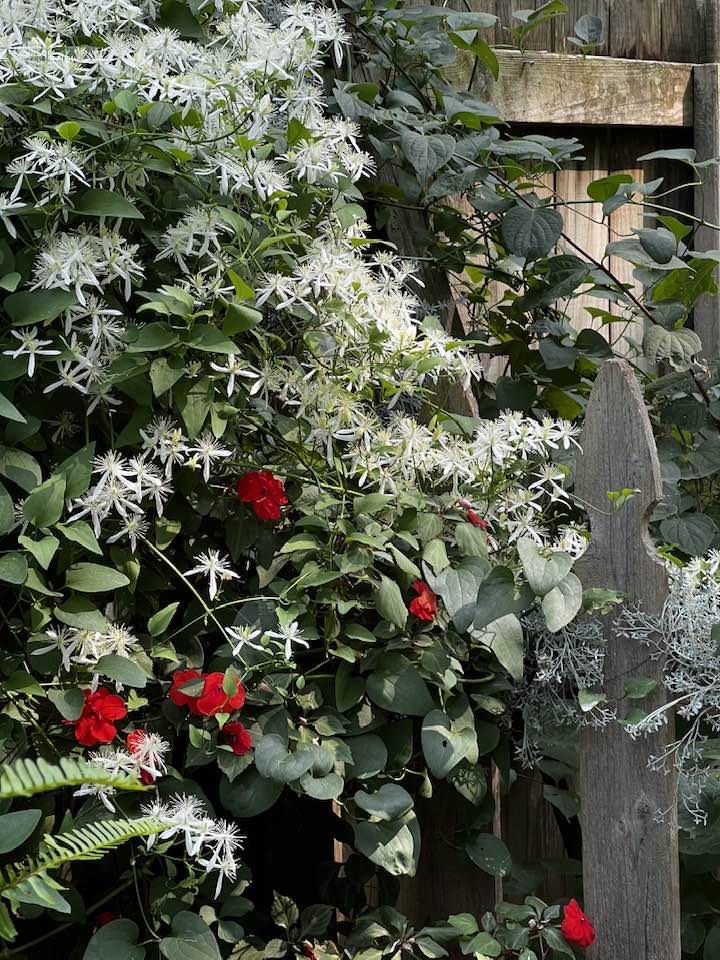
Sweet Autumn Clematis
Jacki Kellum Garden
Carolina Snailweed
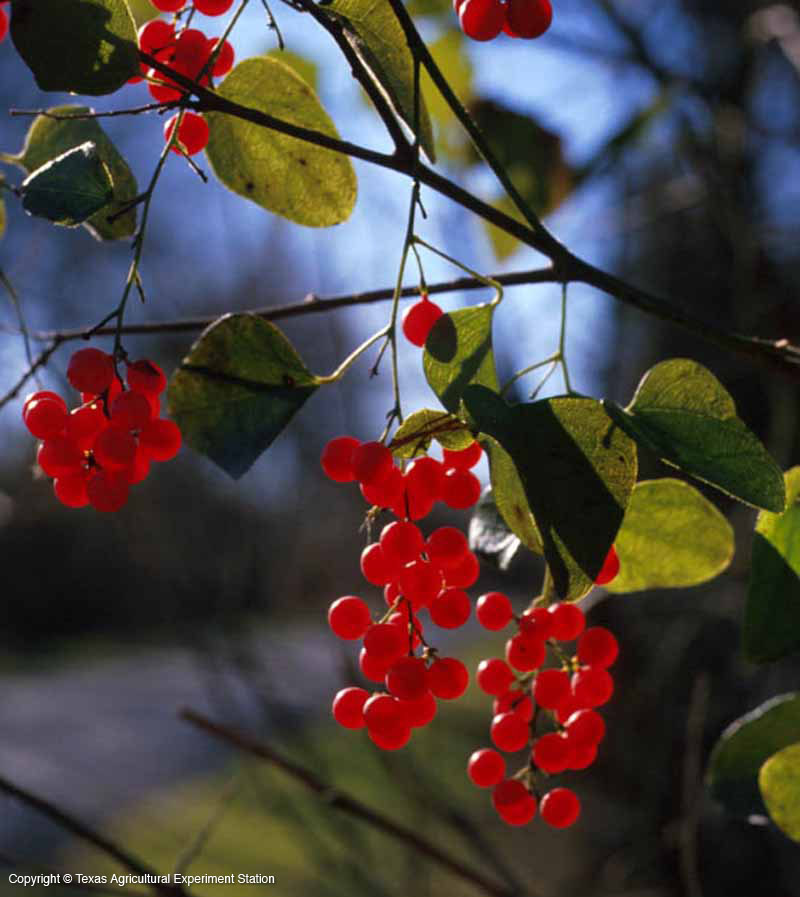
Image Credit: Aggie Horticulture
Cocculus carolinus
Bittersweet Nightshade
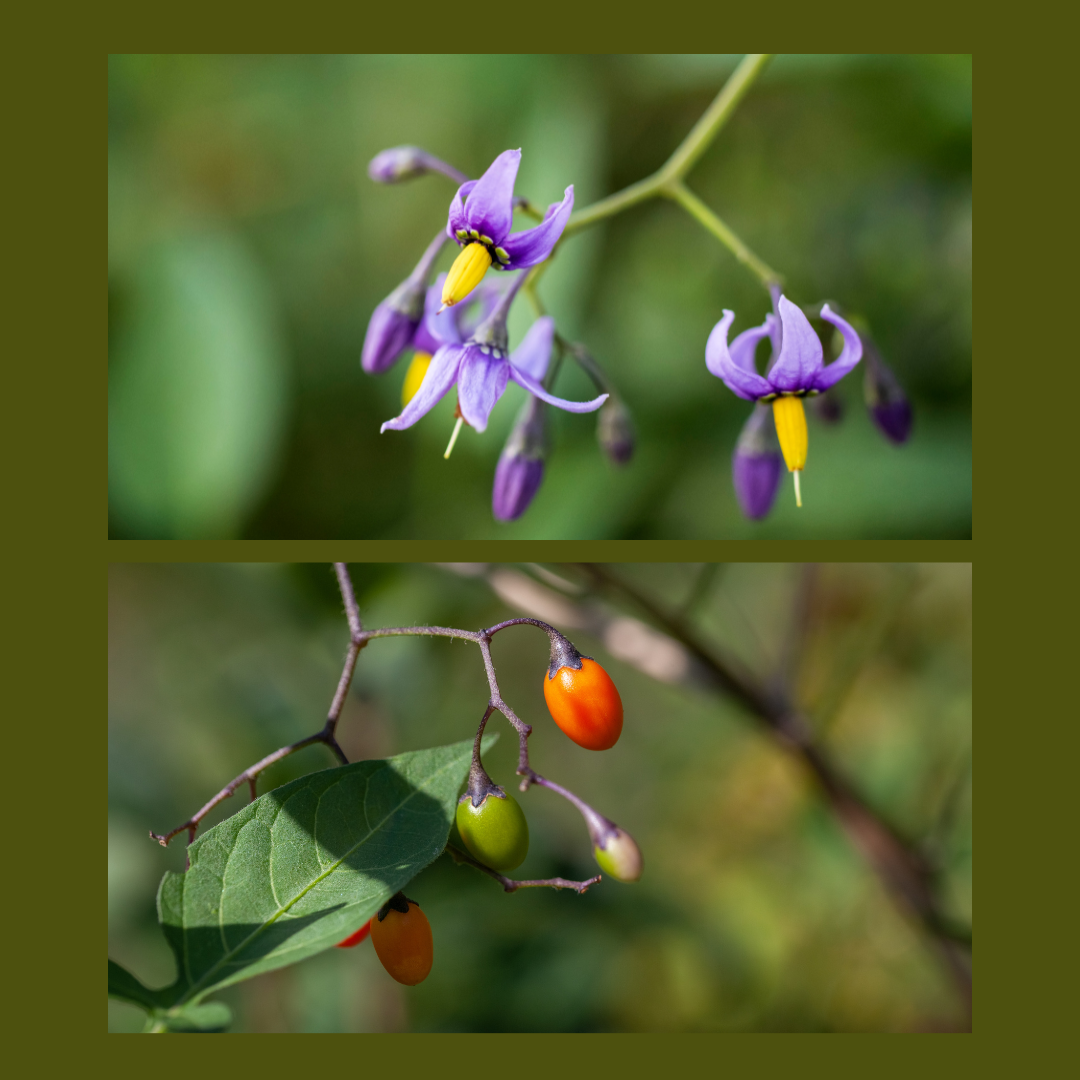
Discover more from Jacki Kellum
Subscribe to get the latest posts sent to your email.